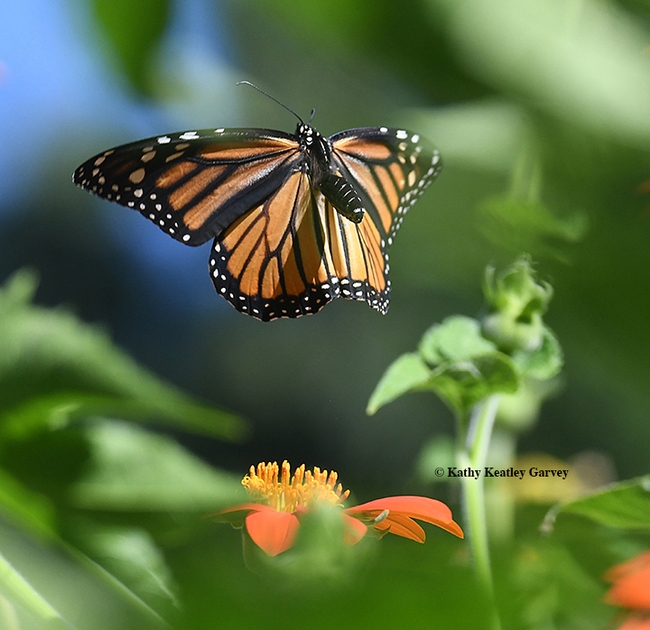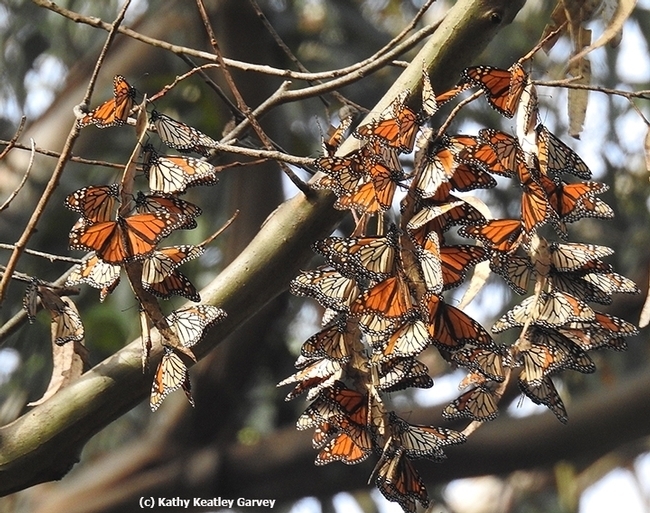
"Guess, who's back?" has nothing to do with the catchphrases uttered by Arnold Schwarzenegger and Jack Nicholson. (Remember when Schwarzenegger promised "I'll be back!" in the 1984 science fiction film, The Terminator, and Nicholson vowed "I'm back" in the 1980 psychological horror film, The Shining?)
Who's back?
Monarch butterflies, Danaus plexippus. Well, at least one monarch is back in the area.
Shapiro sighted a female monarch today in West Sacramento, Yolo County. "It was in good shape, not looking stressed. Of course, Asclepias (native milkweed) has not broken ground."
It's an early sighting, which probably means the coastal clusters may be breaking up early due to the warmer weather than usual.
Shapiro, who maintains a research website at http://butterfly.ucdavis.edu/, has monitored butterfly population trends on a transect across central California since 1972. The 10 sites stretch from the Sacramento River Delta through the Sacramento Valley and Sierra Nevada mountains to the high desert of the Western Great Basin.
The previous plexippus he's seen before Feb. 10 include:
- Jan. 29, 2020 (See Bug Squad blog)
- Feb.1, 2014
- Feb. 9, 2006
- Feb. 9, 1976
"And lots in February after the 10th."
Meanwhile, most of the 250,000 monarchs tallied in California during the Thankgsiving Count, directed by the Xerces Society of Invertebrate Conservation, are still overwintering. Note that this is a 100-fold increase from the 2020 Thanksgiving Count when Xerces recorded a mere 2000.
Western monarchs generally begin clustering at their overwintering sites along coastal California in the late fall, peaking in size in late November or early December. Mating season usually begins around Valentine's Day. The monarchs traditionally depart their overwintering sites in late February or the beginning of March and head inward.
Attached Images:
